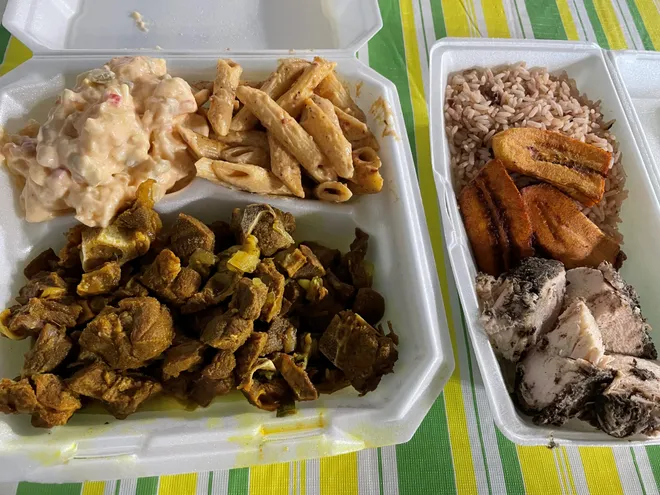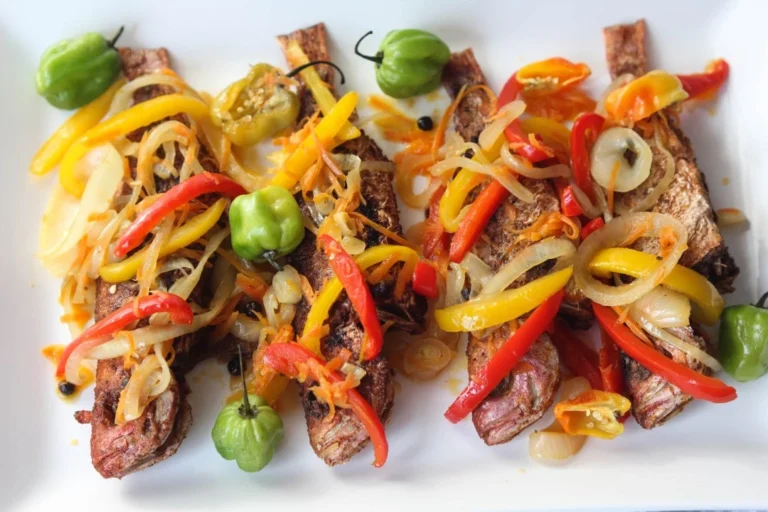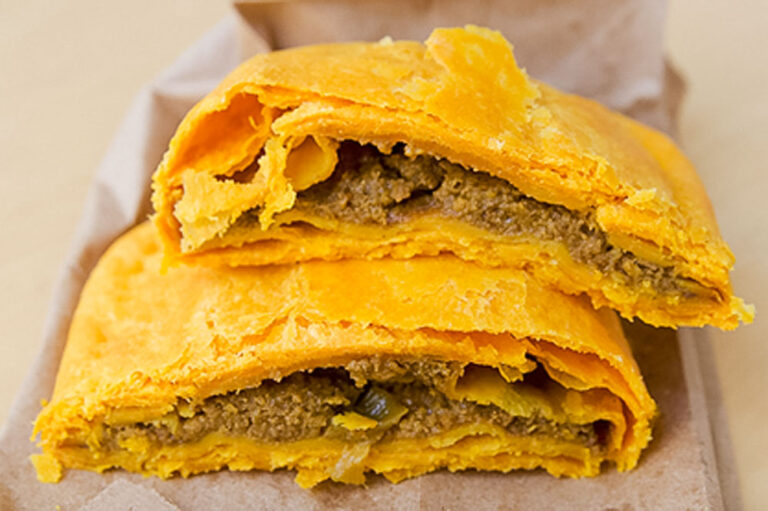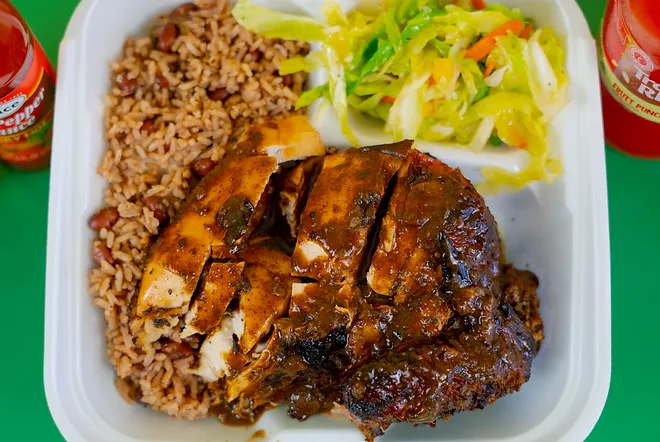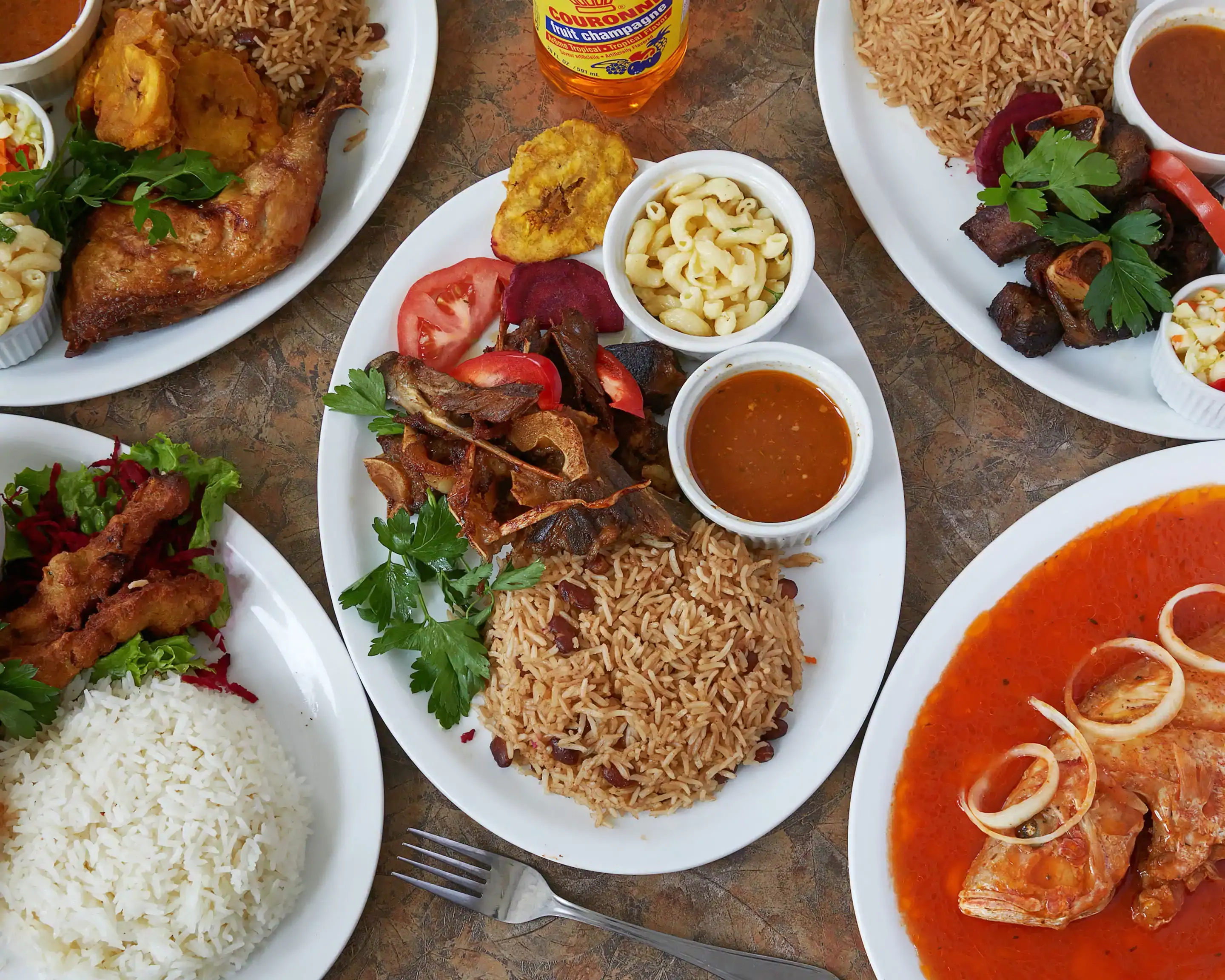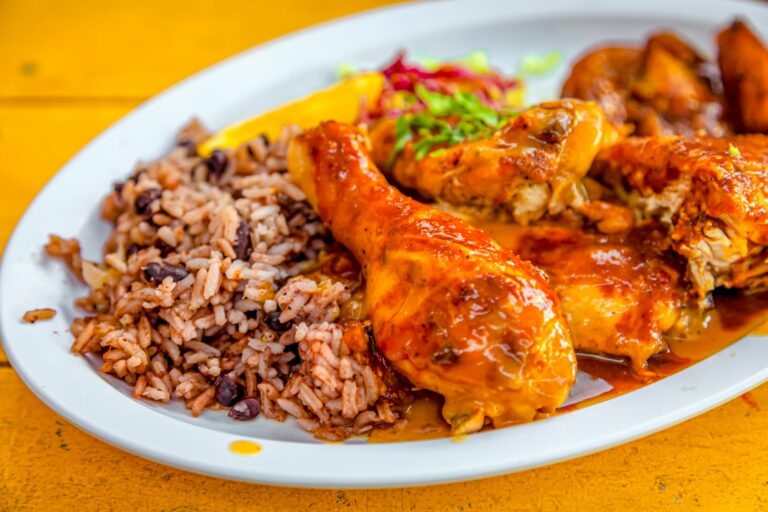Introduction: Jamaican Cuisine
Jamaican cuisine is known for its bold flavors, vibrant colors, and unique blend of spices. The island’s rich history, cultural diversity, and tropical climate have all influenced the way Jamaican food is prepared and enjoyed. From jerk chicken and ackee and saltfish to curry goat and rice and peas, Jamaican dishes are beloved around the world.
But what about the ingredients that go into these dishes? Is there a focus on fresh and locally sourced ingredients in Jamaican cooking? In this article, we will explore the role of freshness and local sourcing in Jamaican cuisine and the challenges that come with it.
Jamaican Ingredients: An Overview
Jamaican cuisine is characterized by a mix of African, European, and indigenous influences. Some of the key ingredients used in traditional Jamaican dishes include:
- Scotch bonnet peppers
- Allspice
- Thyme
- Ginger
- Pimento
- Coconut
- Callaloo
- Ackee
Many of these ingredients are native to the Caribbean, while others were introduced by colonial powers. While some of these ingredients can be found year-round, others are seasonal and only available at certain times of the year.
A Focus on Freshness in Jamaican Cooking
Freshness is an important aspect of Jamaican cooking. Many Jamaican dishes rely on a combination of fresh herbs, spices, and produce to create their signature flavors. In traditional Jamaican households, it is common to use locally grown fruits and vegetables, such as yams, cassava, and plantains.
Freshness also plays a key role in preparing meats and seafood. Jamaican jerk chicken, for example, is often marinated in a blend of fresh herbs and spices before being cooked over an open flame. Similarly, seafood dishes like escovitch fish rely on fresh catches from the sea.
The Rise of Locally Sourced Ingredients
In recent years, there has been a growing focus on locally sourced ingredients in Jamaican cuisine. Many chefs and restaurants are making a conscious effort to use ingredients that are grown or produced in Jamaica, rather than importing them from other countries. This not only supports local farmers and businesses but also ensures that the ingredients are fresh and of high quality.
Some restaurants are even taking things a step further by growing their own herbs, fruits, and vegetables on-site. This allows them to have complete control over the freshness and quality of the ingredients, and also reduces their environmental impact by cutting down on transportation and packaging.
Challenges to Sourcing Fresh and Local
While there is a growing demand for fresh and locally sourced ingredients in Jamaican cuisine, there are also several challenges that come with it. For one, Jamaica’s agricultural industry is still developing, and many farmers lack the resources and infrastructure needed to produce high-quality crops on a large scale.
Additionally, importing ingredients from other countries can often be cheaper and more convenient than sourcing locally. This can make it difficult for restaurants and businesses to justify the extra cost and effort of using locally sourced ingredients.
Conclusion: A Future for Sustainable Jamaican Cuisine
As the demand for fresh and locally sourced ingredients continues to grow, there is a real opportunity for sustainable Jamaican cuisine to flourish. By supporting local farmers and businesses, chefs and restaurant owners can not only create delicious dishes but also help to build a more resilient and sustainable food system in Jamaica.
With a continued focus on freshness, quality, and sustainability, Jamaican cuisine can continue to evolve and thrive for years to come.

